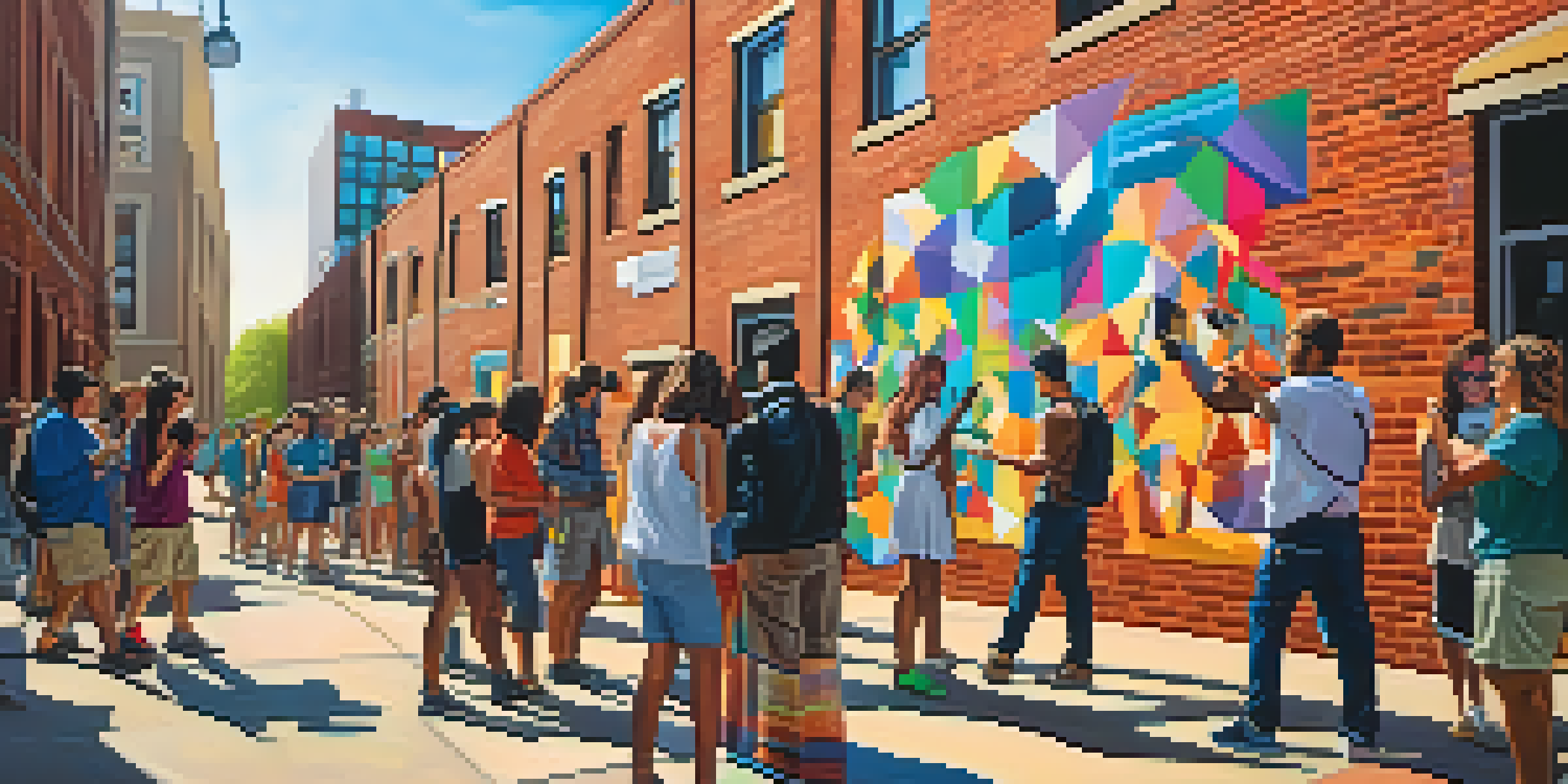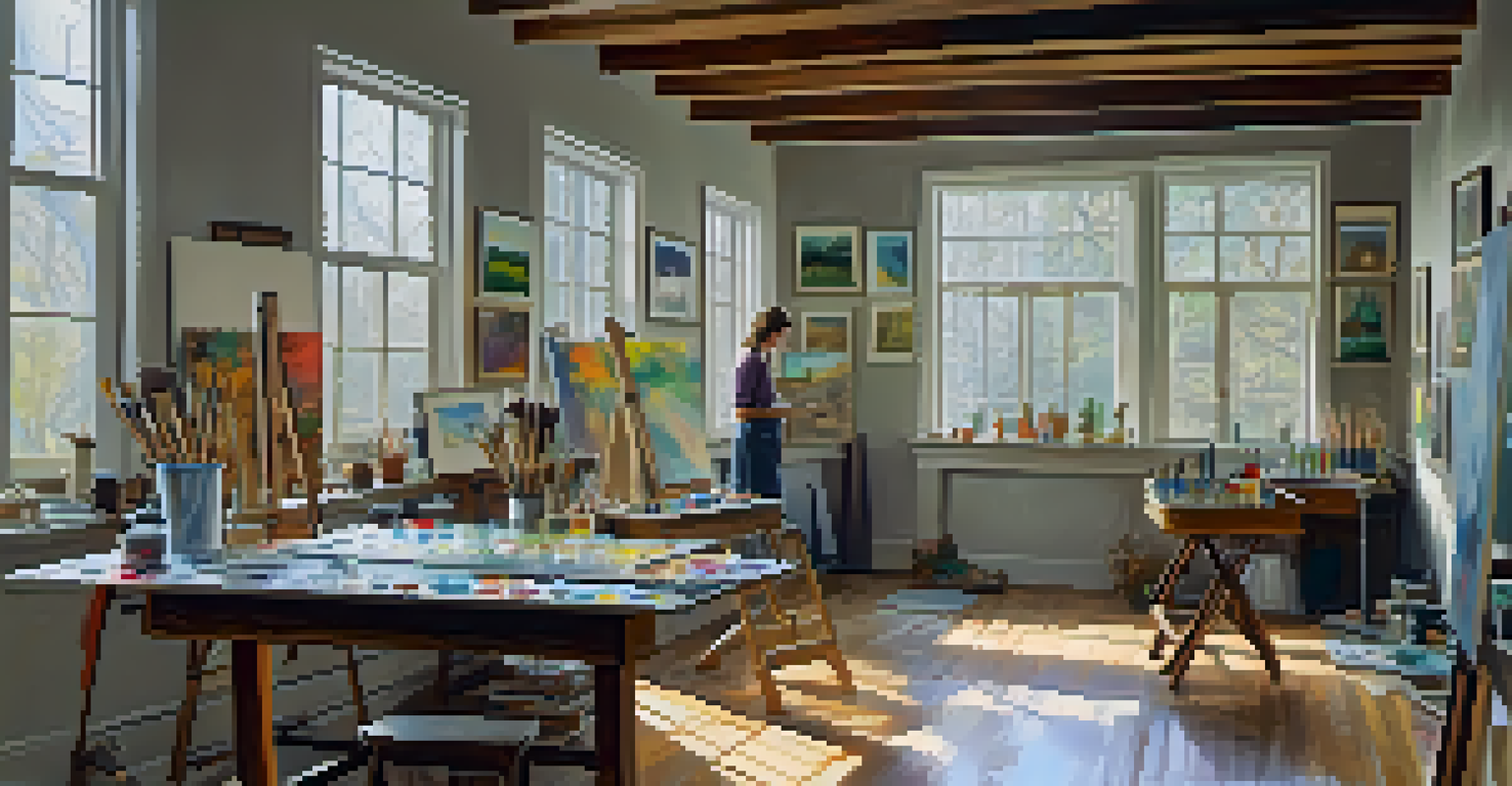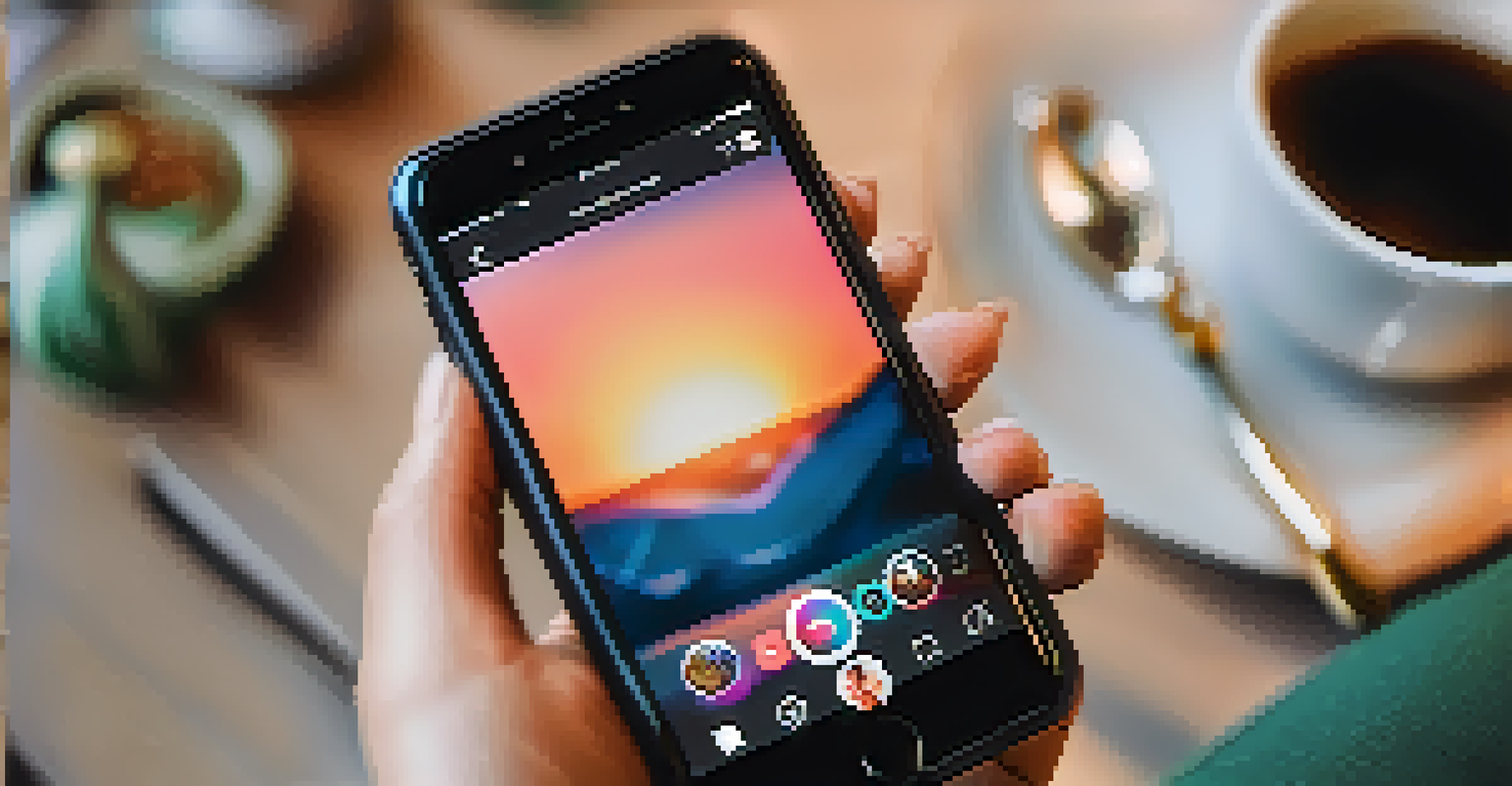Social Media's Influence on Art Trends and Discovery

The Rise of Social Media: A New Canvas for Artists
In today’s digital age, social media has become the new canvas for artists. Platforms like Instagram and TikTok allow creators to showcase their work to a global audience, breaking geographical barriers. This shift has empowered artists to gain visibility and build their brands without the need for traditional galleries. As a result, we’re witnessing a surge in diverse artistic expressions that reflect contemporary culture.
Social media is the new gallery, where every artist can showcase their creativity without the constraints of traditional spaces.
For instance, the hashtag #ArtOnInstagram has become a popular way for artists to share their creations, drawing in viewers and potential buyers. Many artists have found their style and audience through this platform, which encourages experimentation and innovation. As a community, artists can engage with one another, share techniques, and inspire each other, fostering a sense of collaboration that enriches the art scene.
Moreover, social media’s visual nature aligns perfectly with art’s requirement for visual appeal. A single post can reach thousands, if not millions, of eyes, making it a powerful tool for artists seeking recognition. This exposure not only promotes individual artists but also influences broader art trends, as certain styles or themes gain traction through viral posts.
How Trends Emerge and Evolve on Social Media
Art trends often emerge from collective conversations happening online. When artists share their work, they inadvertently contribute to a dialogue about aesthetics, techniques, and cultural themes. For example, the resurgence of 90s-inspired art can be traced back to nostalgic posts that sparked interest in that era's visual style. This phenomenon demonstrates how easily trends can gain momentum through shares and likes.

Additionally, platforms like Pinterest enable users to curate their favorite pieces, creating a visual representation of popular preferences. As users engage with content that resonates with them, algorithms push similar posts to their feeds, amplifying certain styles or movements. This cycle of engagement helps trends evolve quickly, with new ideas and interpretations emerging almost daily.
Social Media Empowers Artists
Artists can showcase their work globally, breaking traditional barriers and gaining visibility through platforms like Instagram and TikTok.
As trends develop, they can inspire artists to adapt their own styles or explore new mediums. This fluidity encourages innovation and keeps the art world dynamic. Artists who are attuned to these shifts can capitalize on trends, ensuring their work remains relevant in a fast-paced digital landscape.
The Role of Influencers in Art Promotion
Influencers play a significant role in shaping public perception of art and artists. As individuals with substantial followings, they have the power to bring attention to emerging talents and niche art forms. When an influencer showcases an artist’s work, it can lead to increased visibility and sales, often overnight. This relationship between influencers and artists is a modern twist on traditional patronage.
Art is the most beautiful of all lies; social media allows it to be seen by the most people, making it even more beautiful.
For example, an influencer might curate an online exhibition featuring lesser-known artists, effectively introducing them to a new audience. This not only benefits the artists by providing exposure but also enriches the influencer’s content, allowing them to connect with their audience in a meaningful way. Such collaborations can spark trends and drive conversations about the featured art, creating a buzz that extends beyond social media.
However, it’s essential for artists to choose influencers whose values align with their own. Authenticity matters; audiences can sense insincerity, which can be detrimental to an artist’s reputation. By collaborating with influencers who genuinely appreciate their work, artists can ensure that their message resonates with the right audience.
Discovering Art Through Social Media Algorithms
Social media algorithms play a pivotal role in how art is discovered online. These algorithms analyze user behavior to curate personalized feeds, showcasing content that aligns with individual interests. For many, this means stumbling upon new artists or art styles they may not have encountered otherwise. This serendipitous discovery can lead to a broader appreciation for diverse forms of art.
For instance, a user who follows a few abstract artists may start seeing recommendations for contemporary artists who employ similar techniques. This exposure broadens their artistic palette and encourages them to explore styles outside their usual preferences. It’s fascinating how algorithms can create a tailored art journey for each viewer, ultimately enriching their experience.
Trends Evolve Through Engagement
Art trends emerge from online dialogues and user interactions, with algorithms amplifying certain styles and themes.
However, the reliance on algorithms also poses challenges. Artists may find it difficult to consistently reach their audience if their content isn’t favored by these algorithms. This unpredictability can be frustrating, leading some artists to adopt strategies that align with trending content to boost visibility. It’s a delicate balance between staying true to one’s artistic vision and adapting to the demands of the digital landscape.
Community Building: The Heart of Social Media Art Spaces
Social media has transformed the way artists build communities around their work. Unlike traditional art venues, online platforms allow for instant feedback and interaction, fostering a sense of belonging among creators. Artists can share their journeys, from the creative process to the challenges they face, inviting others to engage in meaningful conversations. This openness helps cultivate a supportive environment where artists uplift one another.
For example, many artists participate in challenges or collaborative projects initiated by their peers, creating camaraderie and shared experiences. These initiatives not only enhance creativity but also provide networking opportunities that can lead to collaborations or exhibitions. When artists feel supported, they’re more likely to take risks and innovate, pushing the boundaries of their craft.
Moreover, art-focused communities often extend beyond individual artists to include collectors, critics, and art enthusiasts, creating a rich tapestry of interactions. By engaging with their audience and peers, artists can gain insight into public perception and refine their work accordingly. This ongoing dialogue is invaluable, as it helps artists stay connected and relevant in an ever-changing landscape.
Challenges Artists Face in the Digital Space
While social media offers incredible opportunities for artists, it also presents unique challenges. One major concern is the pressure to consistently produce content that engages followers. This can lead to burnout, as artists feel compelled to prioritize social media presence over their creative processes. Striking a balance between creating art and promoting it online can be a daunting task.
Additionally, the potential for art theft is a significant issue in the digital realm. With the ease of sharing and reposting, artists often find their work copied without credit or permission. This not only undermines their efforts but can also lead to lost income, as others profit from their creativity. Protecting one’s art online requires vigilance and can detract from the joy of sharing their work.
Community is Key for Artists
Social media fosters supportive communities where artists can share experiences, collaborate, and receive feedback from peers.
Lastly, the emphasis on algorithms can create an uneven playing field. Emerging artists may struggle to gain traction against established names with larger followings. This disparity can discourage new talent, making them feel invisible in a saturated market. It’s crucial for artists to remain resilient and seek alternative avenues for exposure, ensuring their voices are heard amidst the noise.
The Future of Art in the Age of Social Media
As social media continues to evolve, so too will the landscape of art and its discovery. Emerging technologies, such as virtual reality and augmented reality, are already beginning to change how audiences engage with art. Imagine experiencing a 3D art installation from the comfort of your home or using an app to see how a piece would look on your wall. These innovations could redefine how art is created, shared, and appreciated.
Moreover, new platforms are constantly emerging, providing fresh opportunities for artists to connect with audiences. As trends shift and new mediums arise, artists will need to adapt their strategies to maintain relevance. This adaptability will be key to thriving in a digital world that is always in flux.

Ultimately, the future of art will likely be a blend of traditional practices and digital innovations. As artists continue to navigate the complexities of social media, their creativity will be the driving force behind the next wave of artistic expression. Embracing both the challenges and opportunities of the digital age will ensure that art remains a vibrant part of our cultural dialogue.